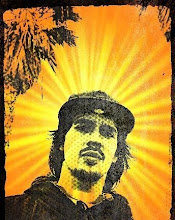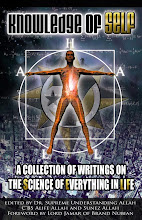 Still struggling after 70 years
Still struggling after 70 years Remembering Puerto Rico's Ponce Massacre
By Yénica Cortés
March 21 marks the 70th anniversary of the Ponce Massacre in the southern city of Ponce, Puerto Rico. The anniversary serves as a reminder to the Puerto Rican people of the true nature of the island's relationship with their colonial oppressor, and of the continued struggle for independence.
The 1937 Ponce Massacre
Puerto Rico has been a colony of the United States since U.S. troops invaded the island in 1898. Before then, the island was a colony of Spain. Spanish invaders brutally conquered the indigenous Taíno population beginning in 1493.
Spain was forced to give up Puerto Rico, Cuba, the Philippines and Guam to the United States in the Treaty of Paris after losing the Spanish-American War.During the Great Depression in the 1930s, the conditions of workers throughout the capitalist world were declining. Unemployment, poverty and starvation were spreading.
Like the rest of the colonized world, these effects were sharply felt in Puerto Rico. Puerto Rico was a mainly agrarian country at the time, relying heavily on the export of sugar, coffee and tobacco.
In 1934, U.S. corporations attempted to impose wage cuts on sugar workers. In response, workers organized a nationwide strike that paralyzed the industry.
Leaders of the growing movement for independence played an important support role in that historic general strike.
The Puerto Rican Nationalist Party had been formed in 1922. But it was after 1930, under the leadership of Pedro Albizu Campos, that the party became a truly mass movement for independence. Albizu Campos, who became the attorney for the sugarcane workers, was ableto give leadership to the radicalized working class, linking the struggle for independence to the demands of the workers.
The period following the sugarcane workers strike was marked by growing clashes between pro-independence groups and colonial troops and police. In 1935, police opened fire on Nationalist Party supporters at the University of Puerto Rico in Rio Piedras.
I
n 1936, two Nationalists—Hiram Rosado and Elias Beauchamp— assassinated Col. E. Francis Riggs, who had commanded the police who carried out the Rio Piedras massacre. Cops arrested the two and executed them on the spot in the police station. No officers were ever convicted of their deaths.
For his leadership during this period, Albizu Campos, like many Puerto Rican independence fighters, became a target for imprisonment. In 1937, he was sentenced to federal prison in Atlanta for "seditious conspiracy to overthrow the U.S. government in Puerto Rico."
On March 21, 1937, the Nationalist Party in Ponce planned to demonstrate against the incarceration of Albizu Campos and to demand independence. For the days leading up to the demonstration, colonial police prepared for slaughter.
Juan Antonio Corretjer, a former Nationalist Party leader and contemporary of Albizu Campos who became a leading voice of Puerto Rican socialism, described the buildup in his pamphlet "Albizu Campos and the Ponce Massacre": "On March 21st, and for some days before, a significant concentration of police was taking place in Ponce. They were well-armed: rifles, carbines, Thompson sub-machine guns, tear gas bombs, plus the usual police clubs, etc.; a force of 200 men in addition to the routine Ponce police garrison."
Corretjer described the opening of the march: "At about 3:15, the Cadets lined up for the march in columns of three abreast. Behind them was the Nurses' Corps in white uniforms. Trailing the Nurses was the band, which consisted of only four musicians. The band played the National Anthem, La Borinqueña, and Cadets and Nurses stood at attention."
But what began as a peaceful demonstration quickly turned hostile when colonial governor-general Blanton Winship revoked the organizers' permits shortly before the march was scheduled to begin.
When protesters insisted on exercising their right to march in spite of having their permits withdrawn, the huge police force positioned themselves on all four sides of the march. As protesters began to walk, they were fired on from all directions for over 15 minutes bythe police.
Twenty-one demonstrators and passers-by were killed that day, including a seven-year-old girl. Another 200 were wounded. Witnesses recalled people being chased and beaten by the police in front of their homes. Others were taken from hiding and killed. Physicians assisting the wounded testified that many were shot in the back while trying to run away. None of the wounded or dead was found with weapons.
Word of the day's events reached every town and city throughout the island.
The message that the colonial forces meant to send to every Puerto Rican was that if they dared to stand against the colonial masters to fight for independence, violent repression would await them.
A few months later, Nationalist Party youth were arrested and convicted for the attempted shooting of Governor Winship during a military parade.
Continued struggle
To this day, Puerto Rico remains a colony of U.S. imperialism. Puerto Rico's location in the Caribbean has served the Pentagon as a base for military intervention against revolutionary struggles in the region, particularly against Cuba.
Since the end of World War II, the U.S. military has directly controlled 14 percent of Puerto Rican territory. Sixty percent of Vieques—Puerto Rico's sister island—and the coastal shore around the Bay of Lajas were also seized to carry out weapons and intelligence experimentation.
All economic, social and political decisions for the island are still made in the Oval Office. Periodic sham referendums give the appearance of consultation, but they are carried out in a political climate of economic blackmail and threats against independence activists—like the 2005 assassination of Boricua Popular Army (EPB) leader Filiberto Ojeda Rios in his home. They never have a binding character on U.S. imperialism. For that reason, national liberationin Puerto Rico has been impossible to attain through the electoral process.
The illusion of a kind and gentle colonial relationship was exposed as a fallacy during the 2006 fiscal crisis in Puerto Rico. The colonial government, backed by Washington, attempted to remedy the crisis by imposing steep taxes on the people and cutting services.
And every year, some $26 billion is drained out of the island by U.S. corporations.But the spirit of the Nationalists who stood up against colonial repression on March 21, 1937 is still felt today. It was felt in the 1998 People's Strike against the pro-statehood governor's plan to privatize Puerto Rico's telephone company. It was felt during the same year's massive protests against the 100th anniversary of the U.S. invasion. It was present in the mass struggle to evict the U.S. Navy from Vieques, led by pro-independence and socialist forces. Eviction was finally achieved on May 1, 2003.
The example of Albizu Campos and the later Puerto Rican revolutionary socialists and nationalists points the way to the future of a free and socialist Puerto Rico.
*Articles may be reprinted with credit to Socialism and Liberation magazine. http://socialismandliberation.org/mag/index.php?aid=773
Also, for more information about Puerto Rican Independence please do the knowledge to the following website: www.september23.org with some additional information materials available on www.ricanstruction.net
PEACE!




















2 comments:
When someone writes an article he/she keeps the image of a user in his/her mind that how a user can understand it.
Thus that's why this piece of writing is outstdanding. Thanks!
Look at my web-site - ideal waist to hip ratio
I have been browsing online more than 3 hours today, but I by
no means discovered any interesting article like yours.
It's beautiful value enough for me. In my view, if all webmasters and bloggers made excellent content as you probably did, the web can be a lot more helpful than ever before.
Also visit my website :: holiday in vietnam
Post a Comment